Sign up for our newsletter, to get updates regarding the Call for Paper, Papers & Research.
Exploring the Current Challenges of Cold Chain Logistics Stakeholders in the Tomatoes Value Chain in Nigeria
- Susanna Ibrahim Zego
- Zuhra Junaida Binti IR Mohamad Husny Hamid
- Nabila AbdulGhani
- Safizahanin Mokhtar
- 1685-1697
- Apr 13, 2024
- Agriculture
Exploring the Current Challenges of Cold Chain Logistics Stakeholders in the Tomatoes Value Chain in Nigeria
Susanna Ibrahim Zego1,2*, Zuhra Junaida Binti IR Mohamad Husny Hamid1, Nabila AbdulGhani1, Safizahanin Mokhtar1,
1Faculty of Built Environment and Surveying, Universiti Teknologi Malaysia
2Nigerian Institute of Transport Technology, Zaria
*Corresponding Author
DOI: https://dx.doi.org/10.47772/IJRISS.2024.803122
Received: 24 February 2024; Revised: 05 March 2024; Accepted: 09 March 2024; Published: 13 April 2024
ABSTRACT
The global substantial losses of fresh tomato products, especially in Nigeria with a reported 50% annual loss, necessitates the need for effective cold chain logistics operations. This is crucial for the safe storage and transportation of perishable fresh tomatoes. However, in Nigeria, cold chain logistics operations encounter challenges impeding their efficiency, reliability, and market growth. This exploratory study aligns with sustainable development goals narrowing on the following objectives: to identify the current operations of Nigerian tomato value chains and secondly, to explore the current challenges faced by cold chain logistics stakeholders in the tomato value chain in Nigeria. Through purposive sampling, focus group discussions, semi-structured interviews, and reflexive thematic analysis, the study reveals themes that reflect the current challenges in the tomato value chain as thus; theme 1; supply chain risk, theme 2; production and farming challenges, theme 3; stakeholder’s poor collaborations and visibility challenge, theme 4; government and policy challenges, theme 5; financial challenge and theme 6; socio-cultural challenges. These findings will guide policymakers and stakeholders in making decisions toward improving the performance and sustainability of the tomato value chain. Future research could focus on addressing challenges stakeholders in other fruit and vegetable value chains.
Keywords; Cold Chain Logistics, Tomato value chain; Distribution problem, stakeholders, Current Challenges.
INTRODUCTION
The cold chain logistics industry worldwide is a key industry estimated to be worth USD 293.27 billion by 2023(Qian et al., 2022). According to Qiu et al. (2020) the growth of urbanization and the shift in consumer lifestyles have affected the production and consumption of food that requires refrigeration, which has accelerated the development of cold chain logistics. Thus, Cold chain logistics stakeholders play a very vital role in organizing and coordinating effective operations and service delivery in the cold chain value stream. According, to Nguyen et al. {2022) cold chain logistics stakeholders’ operations minimize the amount of products lost within the cold value stream by utilizing the internal benefits of business assets for cold storage and by providing the transportation, storage, and personnel needed to create a supply network that meets high standards for quality. Thus, Singh opined that cold chain logistics stakeholders such as Logistics service providers play a crucial role in making cold chain logistics operations more effective. Hence, Aung & Chang (2014; Chaudhuri & Chan, 2018; Nguyen et al., 2022)argued that cold chain logistics stakeholders’ operations are a vital component of the global supply chain operations that ensure fresh food security. However, Cassou et al.(2020); Chukwu & Adibe (2022b) &Suleiman (2021) argued that stakeholders numerous challenges contribute significantly to the poor performance of cold chain logistics industries in Nigeria. Thus, by exploring the current operations and challenges of cold chain logistics stakeholders in the tomato value chain in Nigeria this study shows the depth of challenges stakeholders in the tomato value chain are currently experiencing and the impact on the tomato value chain performance in Nigeria.
Figure 1 shows the conceptual framework of the flow of the paper focus. The flow starts by giving a broad overview of cold chain logistics operations in the Nigerian business environment, followed by the highlighting of stakeholder’s role in the tomato value chains in Nigeria, the current challenges of cold chain logistics in the tomato value chain business environments in Nigeria and the sustainable development goal two (SDG 2) focus.
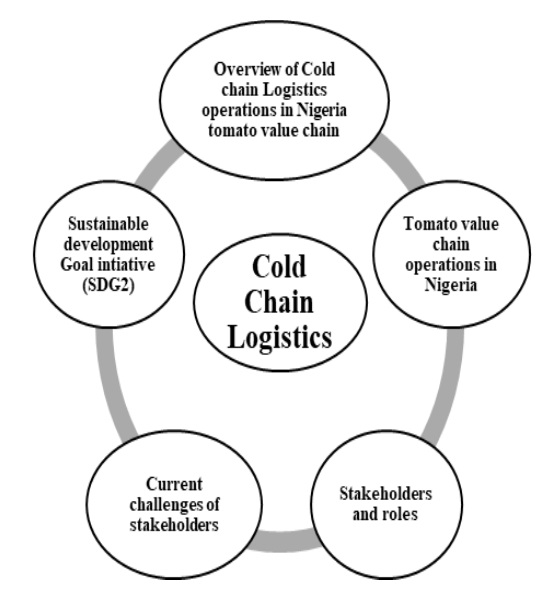
Fig. 1 Conceptual Framework
METHODOLOGY
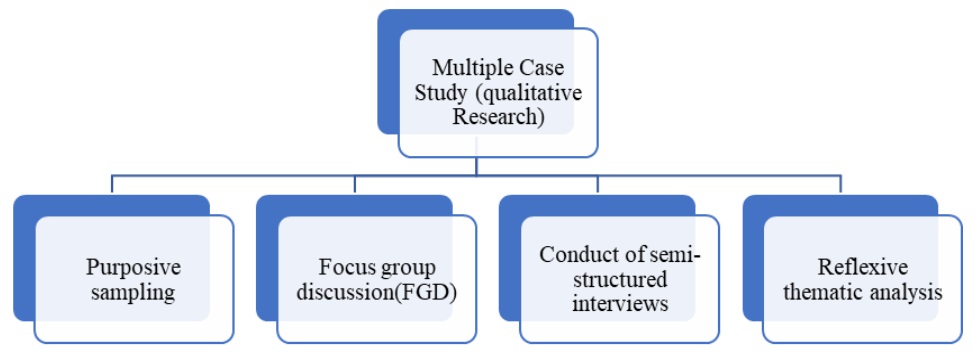
Fig.2 Methodology framework
This qualitative research study focuses on the tomato value chain in Kano and Lagos, Nigeria. Focus group discussions and semi-structured interviews were conducted with relevant stakeholders like regulators, farmers, retailers, wholesalers, consumers, and transporters. The study uses the reflexive thematic analysis six-phase method, using NVIVO software to generate themes and sub-themes through inductive, emotional, and narrative coding styles to arrive at study results.
OVERVIEW OF COLD CHAIN LOGISTICS OPERATIONS IN NIGERIA
Cold chain logistics operations in Nigeria are very minimal and only visible in the urban cities. Nigeria is one the most populous nation in sub- Saharan Africa with an estimated population of about 200million people (Aworh, 2021a). Thus, the population of Nigeria makes it ideal for the growth of cold chain logistics. However, Aigbavboa & Mbohwa, (2020) argued that limitation of operations infrastructure for storage, packaging and transportation is impeding the growth of cold chain logistics in Nigeria. Furthermore, Khan & Ali, (2021); Singh et al., (2018) argued that cold chain logistics (CCL), operations includes refrigeration and temperature-controlled operations which starts from the acquisition of raw materials and down to the end consumers. Thus, cold chain logistics operations aim to maintain product integrity from production to consumption, encompassing transportation, handling, and storage at the consuming destination (Dai et al., 2020). However, Maintaining the freshness of perishables like tomato products is very vital to consumers because these products are highly temperature sensitive and when exposed to other environmental conditions and, when deteriorated, can easily cause adverse effects on human health, product prices and food availability (Aworh, 2021b; Cassou et al., 2020). Similarly, Ndraha et al. (2018); Li et al. (2020); Li et al. (2020); Sakai et al. (2020); Deng et al. (2021); Lim et al. (2022); Shoji et al. (2022) argued that real time temperature monitoring and control, preserve the integrity of cold chain logistics operations and products. Nigeria is still battling with providing the right type of infrastructure and creating the awareness among stakeholders for the growth of cold chain logistics operations.
THE TOMATO VALUE CHAIN IN NIGERIA
Tomato known as (Lycopersicon esculentum mill) according to Ali et al. (2021) is the world’s largest vegetable crop, with a total production of around 180 million metric tons per year. According to Ayomide et al. (2019), Nigeria is a major producer of tomatoes with about 1.56 million metric tons. Similarly, according to Abdul et al. (2020), tomato plays a critical role in meeting domestic and nutritional food requirement and in generating income to producers and creating employment to all other service providers like; farmers, wholesalers, retailers and transporters. In Nigeria, the major tomato processing industries are; Erisco Foods Ltd, Vitals Products Limited, and Dangote Tomato plant Kadawa and Cadbury Nigeria, these industries are Limited, and their operations are insufficient in meeting the growing needs for fresh tomato processing in Nigeria (Abdul et al., 2020). Thus, according to Abimbola (2014); Victor & Eleojo Inekwe (2023); Wongnaa et al. (2023) despite the numerous contributions of the tomato industry to poverty alleviation, in Nigeria, the tomato value chain is faced with a numerous challenge such as agronomical, institutional and post-harvest challenges which lead to huge tomato product losses and waste. Thus, Abdul et al. (2020); Ugonna et al. (2015) opined that tomato wastage occurs mainly at the post-harvest stage during the tomato product processing, packaging and distribution. Although, Ugonna et al. (2015) argued that about 1.8 million tonnes of fresh tomatoes are produced annually, more than half of these products are wasted because of inadequate transportation, storage systems, and processing facilities that cannot handle the demand for tomato products’ storage in Nigeria tomato value chains. Hence in order to maintain an optimum quality and extend the shelf life of tomato it is stored at the ranged of 10oC – 15oC (Nassarawa & Sulaiman, 2019).
Table 1. outlines the criteria for tomato product acceptance and rejection in marketplaces, including appearance, color, shape, texture, weight, size, weight, and species, which buyers and sellers consider before making a selection decision.
Table 1. Criteria for tomato product acceptance in Nigerian markets (Authors’ survey 2023)
| Requirement for acceptance | Requirement for rejects |
| Appearance (freshness) | Bursting and bruising |
| Color | Deep red, light red, light red, green, orange and black |
| Shape (whole oval shaped tomato) | Abnormal external moisture |
| Texture (Firm) | Infestation of the presence of fungi or insects |
| Weight per gram | Extreme maturity |
| Size 3.0 to 5.0 | Visual traces of fumigation |
| Specie | Hybrid (UTC, Roma, Burpree Jubilee Specie, Griffaton Tomato, UC-82B seed 3, Roma, East- West Seed Varieties) |
| Ripe state | Unripe state |
4.1. Tomato Value Chain Stakeholders
The tomato value is a very important value chain that carters for the nutritional, health needs of consumers (Kmiecik & Egbunu, 2022). The operations of the value chain are being coordinated by stakeholders who play a major role at every stage of the value chain operations (Ugonna et al., 2015). Nigerian tomato value operations involve three stakeholders shown in fig 3: regulators, distribution channel members, and logistics service providers. Regulators include government and private sector authorities, distribution channel members include farm suppliers, farmers, wholesalers, and retailers, and logistics service providers include drivers and warehouse managers. These stakeholders ensure the storage and distribution of tomatoes at ambient temperature for freshness.
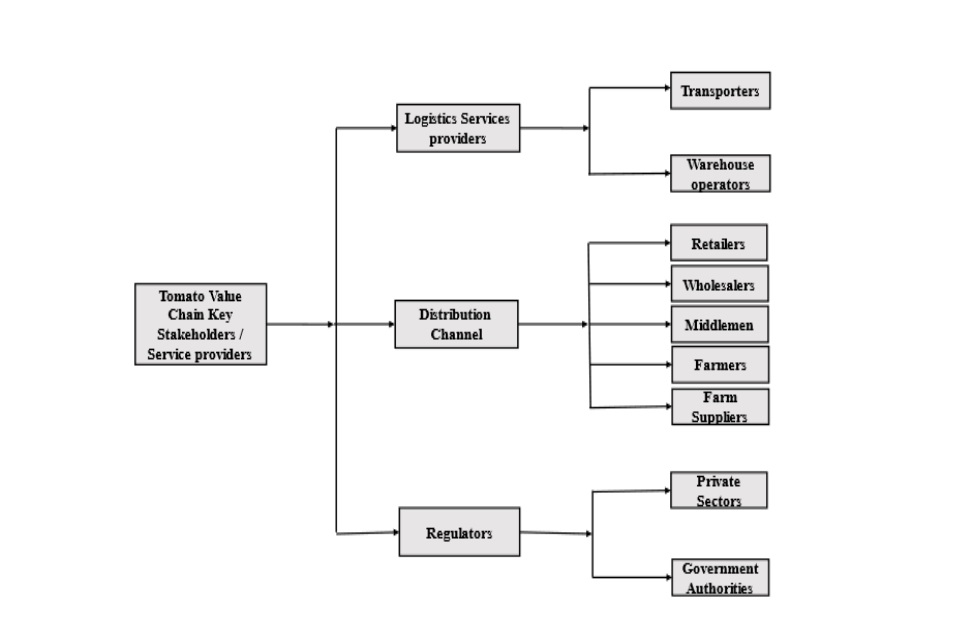
Fig. 3: The tomato value chain stakeholders (Zego & Husny, 2023)
4.2. Tomato Products and Their Major Market
Fresh tomato is highly consumed in Nigeria. It is a major staple that is highly consumed visible in most Nigeria meals (Abdul et al., 2020). Nigeria has numerous markets for fresh tomato products, with most produced in the northern region but primarily consumed in the southern region. The southern part of Nigeria is an ideal market hub for these products, with the movement of tomatoes from source markets in Kano to Lagos market, acting as the main centre for sales This is shown in fig 4.
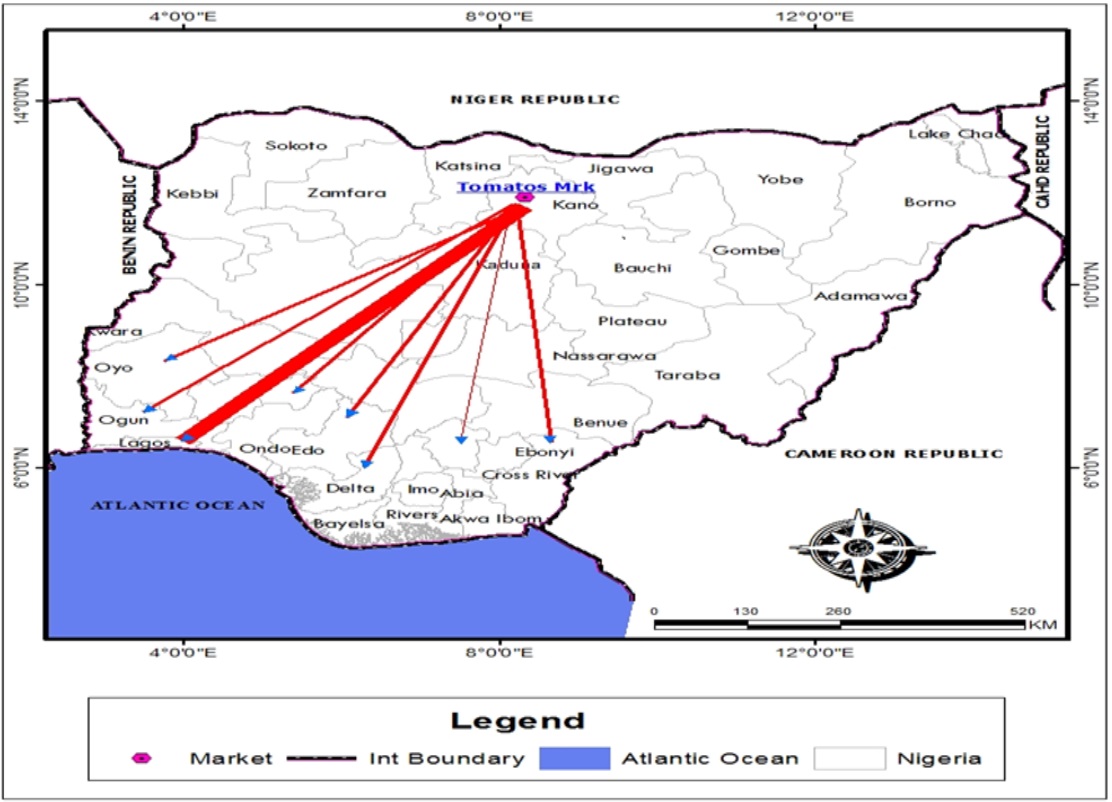
Fig 4. Map showing the flow of Tomato from Kano to Lagos as the main markets and other markets location in Southern Nigeria (Source; Authors ,2023)
RESULTS
5.1 Current Challenge of Cold Chain Logistics Operations in the Tomato Value Chain in Nigeria
Fig 5 illustrates a tree map that presents the current challenges confronting stakeholders. The Nigerian cold chain logistics industry faces various challenges, affecting the performance of the tomato value chain. These challenges are categorized into six main themes: supply chain, collaboration, production, farming, government, policy, financial, and socio-economic. Sub-themes include infrastructure and resource limitations, transportation and distribution problems, technology limitations, poor stakeholder synergy, skills gap, lack of governance, and lack of community awareness.
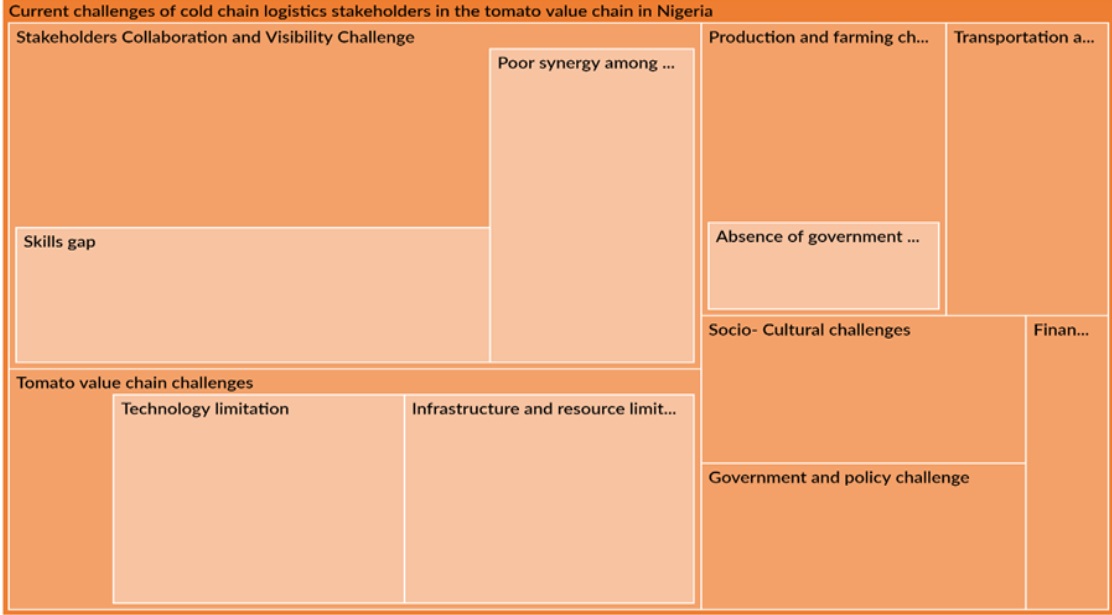
Fig 5. The tree map, showing current challenges of cold chain stakeholders in the tomato value chin in Nigeria.
This is highlighted in fig 6. Figure 6 shows the six (6), dominant themes that emerged from the study finding on the current challenges facing Nigeria tomato value chains. These themes reflect the factors that impede the performance of cold chain logistics stakeholders in the value chain.
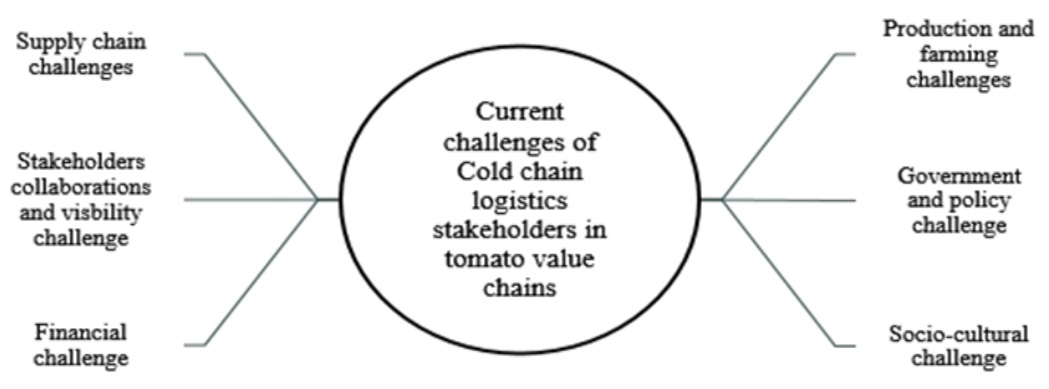
Fig 6. Themes of current challenges of cold chain logistics in the tomato value chains in Nigeria
5.2 Theme 1: Supply Chain Challenges
The theme discusses logistics operations disrupting the tomato value chain, affecting inventory management, production processes, product storage, distribution, and customer services among service providers;
FGD11, RQ1, P1Mmmmmmm, the factors that cause supply chain challenges in the tomato value chain are many some of which are the poor state of infrastructure like bad roads, financial constraints, technology deficit, skill gap, poor maintenance culture, poor working standards and the absence of standard regulatory framework.
5.3 Theme 2: Stakeholders Collaborations and Visibility Challenge
The growth of cold chain logistics in Nigeria’s tomato value chain is hindered by a lack of education and knowledge about its importance, as well as a communication gap between regulators, distribution channel members, and logistics service providers, as highlighted in participant transcripts;
FGD05, P3; We the stakeholders like farmers, wholesaler, retailers and transporters operate independently but we have cordial relationship between ourselves that promote the growth of our business but the regulators like government are distant from us, we just hear their suggestions sometimes on televisions or radios.
5.4 Theme 3: Financial Challenge
Stakeholders in Nigeria face financial challenges and in capabilities that hinder their self-sufficiency and discourage investment in cold chain logistics business growth. High interest rates and difficulty accessing grants make loans expensive, limiting access to infrastructure like warehouses, refrigerated trucks, conveyors, and insulated containers. These issues hinder the growth of tomato value chain operations;
FGD9, Q5, P2; “Most farmers here are smallholder farmers so the source for their finance is through self-financing or cooperative financing”
FGD13, Q5, P2; “We farmers face a lot of challenges raising money on our own to support our farming operations”
5.5 Theme 4: Production and Farming Challenges
This theme reflects the eminent problems encountered in the tomato value that affect farming operations. These problems range from resource shortages, pests’ infestation, climate change challenges and budget constraints. Furthermore, the problems associated with the absence of sustainable agricultural techniques and technology being utilized, poor market accessibility, budgetary limitations, and legal barriers that pose as a challenge to stakeholders in the tomato value chain. This is depicted in participants transcripts as thus;
FGD5, RQ5, P2: The issue of technology support in modern times is a key challenge in our area of business. Then, the issue of having the right infrastructure such as good road and networks for proper product infrastructure availability for product distribution like good roads and road network is essential.
5.6 Theme 5: Government and Policy Challenges
Regulators complain about how the absence of government standard regulatory policy which affect stakeholders’ performance and the quality of services being offered to consumers in the tomato value chains. The absence of policy causes provision of non- uniform and sub-standard services. It also leads to lack of direction, breeds inconsistency in service delivery, promote inefficiencies in service delivery and increases the chances of risk occurrences in the tomato value chain. This further depicted in the transcripts responses as thus;
interviewee 04, A3, Errrrrrrrr so far, Cold chain logistics policy is not yet available in Nigeria. However, stakeholders are trying to draft one.
FGD1, Q2, P1; As far as I am concern, the government does not care about perishable product farmers like us.
5.7 Theme 6: Socio- cultural
This theme reflects how belief systems, culture and traditional practices of stakeholders promote the use of more manual traditional method than modern automated technologies like cold chain logistics technology. This is also a major challenge that impede the growth of cold chain logistics in the tomato value chain in Nigeria. This presented in transcripts as thus;
FGD1, RQ1, P2: Most of our operations are done using traditional methods, manual labour in tomato product handling and packaging by the use of raffia packaging most times
5.8 Discussions
The result of study findings obtained from stakeholders such as; farmers, wholesaler, retailers, transporters in the tomato value chain, reveal that cold chain operations are conspicuously absent in the initial up-stream stages of the tomato value chain in Nigeria, that extends from the farm to the market located in Kano state (Bagwai, Danbata, Garin Mallam) and during transhipment to Lagos markets (Agege Ile Epe and Mile 12). Notably, these operations only become apparent at the down-stream stages of the tomato product value chain, when products are already supplied to the Lagos markets are being transhipped from markets to customer’s destination within Lagos State. This is corroborated by findings of Cassou et al. (2020); Gromko & Abdurasulova (2018) who argued that during long distance transhipment of tomato product from their source in the far north of Nigeria to the southern part where most of these product’s markets are located, no cooling is provided for the product while on transit instead they are just exposed to natural air while on this long-distance transits. The results of findings further shows that the absence of cold chain logistics at the upstream level is evident among key service providers such as farmers, retailers, wholesalers, and transporters, who lack awareness of cold chain logistics operations and benefits within the tomato value chain. This makes them to suffer from huge product losses annually at post-harvest stages due problems of storage and transportation. This further corroborated by studies of Abdul et al. (2020a); Ugonna et al. (2015) who argued that huge Post-Harvest losses are being experienced in the tomato value chain annually due to poor storage and transportation challenges. This study results also reveal that currently, cold chain logistics operations are absent at the primary supply chain level of tomato product supply in Kano (Bagwai, Danbata and Garin Mallam), from farm to market, but are present in the secondary supply chain level Lagos (Agege Ile Epe and Mile 12), during transportation from markets to point of consumption.
The study findings reveal that currently, there is absence of seamless cold chain logistics operations in Nigeria tomato value chains. Furthermore, study findings reveal that what is available in Nigeria is broken cold chain logistics operation which faced with the challenges of multiple disruption in temperature control and non-continuous temperature Flow. This is further corroborated by studies of Cassou et al. (2020); Kitinoja (2013); Shao et al. (2022) who argue that temperature disruption and inconsistencies associated with storage, transportation led to broken chain operations. The visible activities in Nigeria’s tomato value chain are broken chain operations, which result in tomato product losses and waste because of the inability to maintain consistency in temperature monitoring and control from the point of supply to the point of consumption. This study findings also show that the tomato value chain’s cold chain logistics activities in Nigeria have poor visibility which exposes the entire tomato value chain in Nigeria to the high risk of tomato product losses. Hence, according to studies of Castelein et al. (2020); Han et al. (2021); Neusel & Hirzel. (2022). Policy is a key driving force that promote performance of cold chain logistics stakeholders and it needs to be in place to guide operational practices in value chains to avoid product losses. Furthermore, Chukwu et al., (2018); Zego & Mohamad Husny.( 2023) argue that the absence of policy affects cold chain logistics stakeholders’ general growth and performance leading tomato products losses in the value chain.
The study reveals that the lack of government policy and other challenges, such as lack of refrigeration infrastructure, poor visibility on cold chain logistics operations, distribution issues, regulatory system issues, skills deficiencies, and lack of stakeholder synergy, contribute to the poor performance of stakeholders in the Nigerian tomato value chain. The findings are categorized into six main themes: supply chain, stakeholders’ collaborations and visibility, production and farming, government and policy, financial, and socio-economic.
The study findings reveal that these challenges impede the adoption of cold chain logistics practices and operations effectively in the tomato value chains in Nigeria. Some of responses from the study transcripts are thus;
Interviewee, 02, A2; Challenges of cold chain logistics service providers include; Financial constraints, poor state of infrastructure, technology gap, skills gap and no standard regulatory framework, and poor coordination among stakeholders in the tomatoes value chains in Nigeria.
FGD1, Q1, P3; But here in Kano we don’t have any cold chain logistics operations in place but only our traditional methods are in place which we use human labour for planting, harvesting, packaging and loading of the products into the haulage vehicles for intracity and intercity transportation.
PURSUIT OF SUSTAINABLE DEVELOPMENT GOALS INITIATIVES (SDG2)
The Nigerian government is focused on reducing all forms of food insecurity (including chronic hunger and malnutrition) by 2030, as part of the global vision of the SDG2 which aimed at “end hunger, achieve food security and improved nutrition, and promote sustainable agriculture by 2030 according to Ayinde et al. (2020). However, achieving the goals of SDG2 is a multi-stakeholder approach, including governments, international organizations, the private sector, and civil society with the target of food security sustainability at a global scale (Jouzdani &Govindan, 2021).. Similarly, Herrero 2021) argued that food systems innovation is vital in achieving multiple sustainable developments goals in value chains like the tomato value chains. Thus, according to Hansen et al. (2022), sustainable development goals objectives emphasize the importance of sustainable agriculture, addressing malnutrition, promoting rural development, and ensuring access to food for all, with a focus on leaving no one behind despite the challenge of climate change.
LIMITATION
The study findings are limited to only the cold chain logistics stakeholders’ challenges in tomato value chain within the Kano (Bagwai, Danbata, Garin Mallam) and Lagos (Agege, Ile Epe, Mile 12 markets) trading corridors. Not all stakeholders in this value chain were sampled. only those directly linked to the study area were purposively sampled.
RECOMMENDATION FOR FUTURE STUDIES
Future research can extend beyond tomatoes to investigate challenges in cold chain logistics for various perishable products in Nigeria. Exploring different value chains will provide a comprehensive understanding of common issues, enabling policymakers and stakeholders to develop targeted solutions for sustainable and efficient cold chain operations across the country.
CONCLUSION
The study findings reveal that the current challenges faced by cold chain logistics stakeholders in the tomato value chain in Nigeria are both complex and multifaceted, reflecting on the intricate nature of this critical component of the nation’s cold chain logistics industry. Thus, these challenges are responsible for the poor synergy and performance of stakeholders in the tomato value chain and cold chain industry at large in Nigeria. This further shows that while Nigeria boasts of a growing economy and a surging demand for fresh temperature-sensitive products, the infrastructure and systems necessary to maintain the integrity of these products remain underdeveloped and strained. In light of this, it is evident that addressing the challenges of cold chain logistics stakeholders within the tomato value chain is not only a logistical necessity but a crucial requirement for overall cold chains logistics operations economic growth and development. This will further ensure the safe and effective distribution of temperature-sensitive products, attainment of food security and healthy living in line with the sustainable development goal SD2 focus.
FUNDING
This study was funded by The Nigerian Institute of Transport Technology Zaria, vote number Jl300000.7309,4B689(PY2021/00646).
ACKNOWLEDGEMENTS
The authors acknowledge the support of the Nigeria Institute of transport Zaria finding this research.
REFERENCE
- Abdul, I. M., Kyari Yerima, A., Suleiman, B., Yerima, A. K., & Badamasi, S. A. (2020a). A review of the problems of tomato value chain in Nigeria: Remedial Option. Net, 8(3), 90–95. https://www.researchgate.net/profile/Ibrahim-Muhammad-Abdul/publication/346542738_Review_of_the_Problems_of_Tomato_Value_Chain_in_Nigeria_Remedial_Option/links/5fc689be92851c00f844f3ac/Review-of-the-Problems-of-Tomato-Value-Chain-in-Nigeria-Remedial-Optio
- Abdul, I. M., Kyari Yerima, A., Suleiman, B., Yerima, A. K., & Badamasi, S. A. (2020b). Review of the Problems of Tomato Value Chain in Nigeria: Remedial Option. International Journal of Agriculture, 8(3), 90–95. http://www.openscienceonline.com/journal/ijaff
- Abimbola, O. A. (2014). Post-harvest losses and welfare of tomato farmers in Ogbomosho, Osun state, Nigeria. Journal of Stored Products and Postharvest Research, 5(2), 8–13. https://doi.org/10.5897/jsppr2014.0160
- Aigbavboa, S., & Mbohwa, C. (2020). The headache of medicines’ supply in Nigeria: An exploratory study on the most critical challenges of pharmaceutical outbound value chains. Procedia Manufacturing, 43, 336–343. https://doi.org/10.1016/j.promfg.2020.02.170
- Akram, H. W., Akhtar, S., Ahmad, A., Anwar, I., & Sulaiman, M. A. B. A. (2023). Developing a Conceptual Framework Model for Effective Perishable Food Cold-Supply-Chain Management Based on Structured Literature Review. In Sustainability (Switzerland) (Vol. 15, Issue 6). MDPI. https://doi.org/10.3390/su15064907
- Ali, A., Xia, C., Ouattara, N. B., Mahmood, I., & Faisal, M. (2021). Economic and environmental consequences’ of postharvest loss across food supply Chain in the developing countries. Journal of Cleaner Production, 323. https://doi.org/10.1016/j.jclepro.2021.129146
- Aung, M. M., & Chang, Y. S. (2014). Temperature management for the quality assurance of a perishable food supply chain. Food Control, 40(1), 198–207. https://doi.org/10.1016/j.foodcont.2013.11.016
- Aworh, O. C. (2021a). Food safety issues in fresh produce supply chain with particular reference to sub-Saharan Africa. Food Control, 123(September), 107737. https://doi.org/10.1016/j.foodcont.2020.107737
- Aworh, O. C. (2021b). Food safety issues in fresh produce supply chain with particular reference to sub-Saharan Africa. In Food Control (Vol. 123). Elsevier Ltd. https://doi.org/10.1016/j.foodcont.2020.107737
- Ayinde, I. A., Otekunrin, O. A., Akinbode, S. O., & Otekunrin, O. A. (2020). Food Security in Nigeria: Impetus for Growth and Development. www.premierpublishers.org,
- Ayomide, O. B., Ajayi, O. O., & Ajayi, A. A. (2019). Advances in the development of a tomato postharvest storage system: Towards eradicating postharvest losses. Journal of Physics: Conference Series, 1378(2). https://doi.org/10.1088/1742-6596/1378/2/022064
- Babatunde, A. I. (2019). Electronic Research Journal of Social Sciences and Humanities www.eresearchjournal.com Vol 1: Issue III Jul – Sep 2019. 1(Iii), 77–109.
- Cassou, E., Constantino, L., Hou, X., Jain, S., Messent, F., Morales, X. Z., Carlo, J., Pascual, G., De, F. M., Thapa, D., Trinidad, R. Q., Hall, M. F., Quested, T., Parry, A., & Kneller, C. (2020). Nigeria food smart country diagnostic. 1–28.
- Castelein, B., Geerlings, H., & van Duin, R. (2020). Cold chain strategies for seaports: Towards a worldwide policy classification and analysis. European Journal of Transport and Infrastructure Research, 20(3), 1–28. https://doi.org/10.18757/ejtir.2020.20.3.4074
- Chaboud, G., & Moustier, P. (2021). The role of diverse distribution channels in reducing food loss and waste: The case of the Cali tomato supply chain in Colombia. Food Policy, 98(August 2019), 101881. https://doi.org/10.1016/j.foodpol.2020.101881
- Chaudhuri, A., & Chan, H. K. (2018). Decision-making in cold chain logistics using data analytics : a literature review. 29(3), 839–861. https://doi.org/10.1108/IJLM-03-2017-0059
- Chukwu, O. A., & Adibe, M. (2022a). quality assessment of cold chain storage facilities for regulatory and quality management compliance in a dveloping country. 37(2), 5–7.
- Chukwu, O. A., & Adibe, M. (2022b). No Title. International Journal of Health Planning and Management, 37(2). https://doi.org/10.1002/hpm.3385
- Chukwu, O. A., Chukwu, U., & Lemoha, C. (2018a). Poor performance of medicines logistics and supply chain systems in a developing country context: lessons from Nigeria. Journal of Pharmaceutical Health Services Research, 9(4), 289–291. https://doi.org/10.1111/jphs.12274
- Chukwu, O. A., Chukwu, U., & Lemoha, C. (2018b). Poor performance of medicines logistics and supply chain systems in a developing country context: lessons from Nigeria. Journal of Pharmaceutical Health Services Research, 9(4), 289–291. https://doi.org/10.1111/jphs.12274
- Dai, J., Che, W., Lim, J. J., & Shou, Y. (2020). Service innovation of cold chain logistics service providers: A multiple-case study in China. Industrial Marketing Management, 89(July), 143–156. https://doi.org/10.1016/j.indmarman.2019.08.002
- Deng, H., Wang, M., Hu, Y., Ouyang, J., & Li, B. (2021). An Improved Distribution Cost Model Considering Various Temperatures and Random Demands: A Case Study of Harbin Cold-Chain Logistics. IEEE Access, 9, 105521–105531. https://doi.org/10.1109/ACCESS.2021.3100577
- Gromko, D., & Abdurasulova, G. (2018). Climate change mitigation and food loss and waste reduction: Exploring the business case. 18, 54.
- Guest, G., Namey, E., & McKenna, K. (2017). How Many Focus Groups Are Enough? Building an Evidence Base for Nonprobability Sample Sizes. In Field Methods (Vol. 29, Issue 1, pp. 3–22). SAGE Publications Inc. https://doi.org/10.1177/1525822X16639015
- Han, J.-W. J. W., Zuo, M., Zhu, W.-Y. W. Y., Zuo, J.-H. J. H., Lü, E.-L. E. L., & Yang, X.-T. X. T. (2021). A comprehensive review of cold chain logistics for fresh agricultural products: Current status, challenges, and future trends. Trends in Food Science and Technology, 109(January), 536–551. https://doi.org/10.1016/j.tifs.2021.01.066
- Hansen, J., List, G., Downs, S., Carr, E. R., Diro, R., Baethgen, W., Kruczkiewicz, A., Braun, M., Furlow, J., Walsh, K., & Magima, N. (2022). Impact pathways from climate services to SDG2 (“zero hunger”): A synthesis of evidence. Climate Risk Management, 35(July 2021), 100399. https://doi.org/10.1016/j.crm.2022.100399
- Herrero, M., Thornton, P. K., Mason-D’Croz, D., Palmer, J., Bodirsky, B. L., Pradhan, P., Barrett, C. B., Benton, T. G., Hall, A., Pikaar, I., Bogard, J. R., Bonnett, G. D., Bryan, B. A., Campbell, B. M., Christensen, S., Clark, M., Fanzo, J., Godde, C. M., Jarvis, A., … Rockström, J. (2021). Articulating the effect of food systems innovation on the Sustainable Development Goals. The Lancet Planetary Health, 5(1), e50–e62. https://doi.org/10.1016/S2542-5196(20)30277-1
- Jouzdani, J., & Govindan, K. (2021). On the sustainable perishable food supply chain network design: A dairy products case to achieve sustainable development goals. Journal of Cleaner Production, 278(January), 3–6. https://doi.org/10.1016/j.jclepro.2020.123060
- Khan, A. U., & Ali, Y. (2021). Sustainable supplier selection for the cold supply chain (CSC) in the context of a developing country. Environment, Development and Sustainability, 23(9), 13135–13164. https://doi.org/10.1007/s10668-020-01203-0
- Kitinoja, L. (2013). Use of cold chains for reducing food losses in developing countries. PEF White Paper, 6(13), 1–16.
- Kitinoja, L., Motunrayo Odeyemi, O., Dubey, N., Musanase, S., & Gill, G. S. (2019). Commodity system assessment studies on the postharvest handling and marketing of tomatoes in Nigeria, Rwanda and Maharashtra, India. Journal of Horticulture and Postharvest Research, 2(Special Issue-Postharvest Losses), 1–14. https://doi.org/10.22077/jhpr.2019.2060.1040
- Kmiecik, M., & Egbunu, J. O. (2022a). INTERNET OF TOMATOES AS A TOOL FOR ADDED VALUE CREATION. THE MODEL BASED ON THE DISTRIBUTION NETWORK IN NIGERIA. Modern Management Review, 27(2), 31–44. https://doi.org/10.7862/rz.2022.mmr.09
- Kmiecik, M., & Egbunu, J. O. (2022b). INTERNET OF TOMATOES AS A TOOL FOR ADDED VALUE CREATION. THE MODEL BASED ON THE DISTRIBUTION NETWORK IN NIGERIA. Modern Management Review, 27(2), 31–44. https://doi.org/10.7862/RZ.2022.MMR.09
- Li, B., Guo, J., Xia, J., Wei, X., Shen, H., Cao, Y., Lu, H., & Lü, E. (2020a). Temperature distribution in insulated temperature-controlled container by numerical simulation. Energies, 13(18). https://doi.org/10.3390/en13184765
- Li, B., Guo, J., Xia, J., Wei, X., Shen, H., Cao, Y., Lu, H., & Lü, E. (2020b). Temperature distribution in insulated temperature-controlled container by numerical simulation. Energies, 13(18). https://doi.org/10.3390/en13184765
- Lim, M. K., Li, Y., Wang, C., & Tseng, M.-L. (2022). Prediction of cold chain logistics temperature using a novel hybrid model based on the mayfly algorithm and extreme learning machine. Industrial Management and Data Systems, 122(3), 819–840. https://doi.org/10.1108/IMDS-10-2021-0607
- Mitchell, R. K., Agle, B. R., Wood, D. J., & Mitchell, R. K. (1997). Mitchell et al. – 2009 – TOWARD A THEORY OF STAKEHOLDER IDENTIFICATION AND SALIEN.pdf. Academy of Management Review, 22(4), 853–886.
- Nassarawa, S. S., & Sulaiman, S. A. (2019). Extending the shelf life of tomato and onion in Nigeria: A review. International Journal of Food Sciences and Nutrition, 4, 99-111. Net, 4(September), 99–111. https://www.researchgate.net/profile/Shamsudeen-Sanusi-Nassarawa/publication/336287631_Extending_the_shelf_life_of_tomato_and_onion_in_Nigeria_A_review/links/5d9a240f458515c1d39c3c24/Extending-the-shelf-life-of-tomato-and-onion-in-Nigeria-A-review.pdf
- Ndraha, N., Hsiao, H. I., Vlajic, J., Yang, M. F., & Lin, H. T. V. (2018). Time-temperature abuse in the food cold chain: Review of issues, challenges, and recommendations. Food Control, 89, 12–21. https://doi.org/10.1016/j.foodcont.2018.01.027
- Neusel, L., & Hirzel, S. (2022). Energy efficiency in cold supply chains of the food Sector: An exploration of conditions and perceptions. Cleaner Logistics and Supply Chain, 5, 100082. https://doi.org/10.1016/j.clscn.2022.100082
- Nguyen, N.-A.-T., Wang, C.-N., Dang, L.-T.-H., Dang, L.-T.-T., & Dang, T.-T. (2022). Selection of Cold Chain Logistics Service Providers Based on a Grey AHP and Grey COPRAS Framework: A Case Study in Vietnam. Axioms, 11(4), 154. https://doi.org/10.3390/axioms11040154
- Olukotun, O., Suleiman, R., Okechalu, S. O., Obekpa, N. B., Sunday, I. N., & Olafimihan, O. W. (2022). Marketing Channels And Marketing Margin Analysis Of Tomato Retailing In Two Selected Markets Within Kaduna Metropolis, Kaduna State, Nigeria. Russian Journal of Agricultural and Socio-Economic Sciences, 121(1), 115–120. https://doi.org/10.18551/rjoas.2022-01.14
- Onwuegbuzie, A. J., Dickinson, W. B., Leech, N. L., & Zoran, A. G. (2009). A Qualitative Framework for Collecting and Analyzing Data in Focus Group Research.
- Qian, J., Yu, Q., Jiang, L., Yang, H., & Wu, W. (2022). Food cold chain management improvement: A conjoint analysis on COVID-19 and food cold chain systems. Food Control, 137(February), 108940. https://doi.org/10.1016/j.foodcont.2022.108940
- Qiu, F., Zhang, G., Chen, P. K., Wang, C., Pan, Y., Sheng, X., & Kong, D. (2020). A novel multi-objective model for the cold chain logistics considering multiple effects. Sustainability (Switzerland), 12(19), 1–28. https://doi.org/10.3390/su12198068
- Sakai, K., Lee, J. H., Kocharunchitt, C., Ross, T., Jenson, I., Koyama, K., & Koseki, S. (2020). Development of a Maillard Reaction–Based Time-Temperature Integrator/indicator (TTI) for Visual Monitoring of Chilled Beef During Long-term Storage and Distribution. Food and Bioprocess Technology, 13(12), 2094–2103. https://doi.org/10.1007/s11947-020-02549-z
- Shao, X., Liu, Y., Tian, J., & Cheng, T. (2022). A cold chain logistics traceability system framework based on the identification and resolution system for Industrial Internet. ACM International Conference Proceeding Series, 242–250. https://doi.org/10.1145/3582197.3582238
- Shashi, Cerchione, R., Singh, R., Centobelli, P., & Shabani, A. (2018). Food cold chain management: From a structured literature review to a conceptual framework and research agenda. In International Journal of Logistics Management (Vol. 29, Issue 3, pp. 792–821). Emerald Group Holdings Ltd. https://doi.org/10.1108/IJLM-01-2017-0007
- Shashi, S., Centobelli, P., Cerchione, R., & Ertz, M. (2021). Food cold chain management: what we know and what we deserve. Supply Chain Management, 26(1), 102–135. https://doi.org/10.1108/SCM-12-2019-0452
- Shoji, K., Schudel, S., Onwude, D., Shrivastava, C., & Defraeye, T. (2022). Mapping the postharvest life of imported fruits from packhouse to retail stores using physics-based digital twins. Resources, Conservation and Recycling, 176. https://doi.org/10.1016/j.resconrec.2021.105914
- Sibomana, M. S., Workneh, T. S., & Audain, K. (2016). A review of postharvest handling and losses in the fresh tomato supply chain: a focus on Sub-Saharan Africa. Food Security, 8(2), 389–404. https://doi.org/10.1007/s12571-016-0562-1
- Singh, R. K., Gunasekaran, A., & Kumar, P. (2018). Third party logistics (3PL) selection for cold chain management: a fuzzy AHP and fuzzy TOPSIS approach. Annals of Operations Research, 267(1–2), 531–553. https://doi.org/10.1007/s10479-017-2591-3
- Stellingwerf, H. M., Kanellopoulos, A., van der Vorst, J. G. A. J., & Bloemhof, J. M. (2018). Reducing CO<inf>2</inf> emissions in temperature-controlled road transportation using the LDVRP model. Transportation Research Part D: Transport and Environment, 58, 80–93. https://doi.org/10.1016/j.trd.2017.11.008
- Suleiman, A. I. (2021). Accelerating Post-Harvest Food Loss Reduction in Nigeria Through the Development of a Pilot-Scale Vacuum Cooling and Storage System. Journal of Biology, Agriculture and Healthcare, October. https://doi.org/10.7176/jbah/11-20-03
- Ugonna, C., Jolaoso, M., & Onwualu, A. (2015). Tomato Value Chain in Nigeria: Issues, Challenges and Strategies. Journal of Scientific Research and Reports, 7(7), 501–515. https://doi.org/10.9734/jsrr/2015/16921
- Victor, A., & Eleojo Inekwe, I. (n.d.). Logistics Management and Seasonal Price Variation of Fresh Tomato in Nigeria Market. African Scholars Journal of Business Dev. and Management Res.
- Wang, X., & Cao, W. (2021). Research on optimization of distribution route for cold chain logistics cooperative distribution of fresh e-commerce based on price discount. Journal of Physics: Conference Series, 1732(1). https://doi.org/10.1088/1742-6596/1732/1/012041
- Wongnaa, C. A., Ankomah, E. D., Ojo, T. O., Abokyi, E., Sienso, G., & Awunyo-Vitor, D. (2023). Valuing postharvest losses among tomato smallholder farmers: evidence from Ghana. Cogent Food and Agriculture, 9(1). https://doi.org/10.1080/23311932.2023.2187183
- Zego, S. I., & Mohamad Husny, Z. J. B. (2023). Performance of cold chain logistics service providers in the fast-moving consumer goods industry in Nigeria: a systematic review. IOP Conference Series: Earth and Environmental Science, 1274(1), 012021. https://doi.org/10.1088/1755-1315/1274/1/012021

